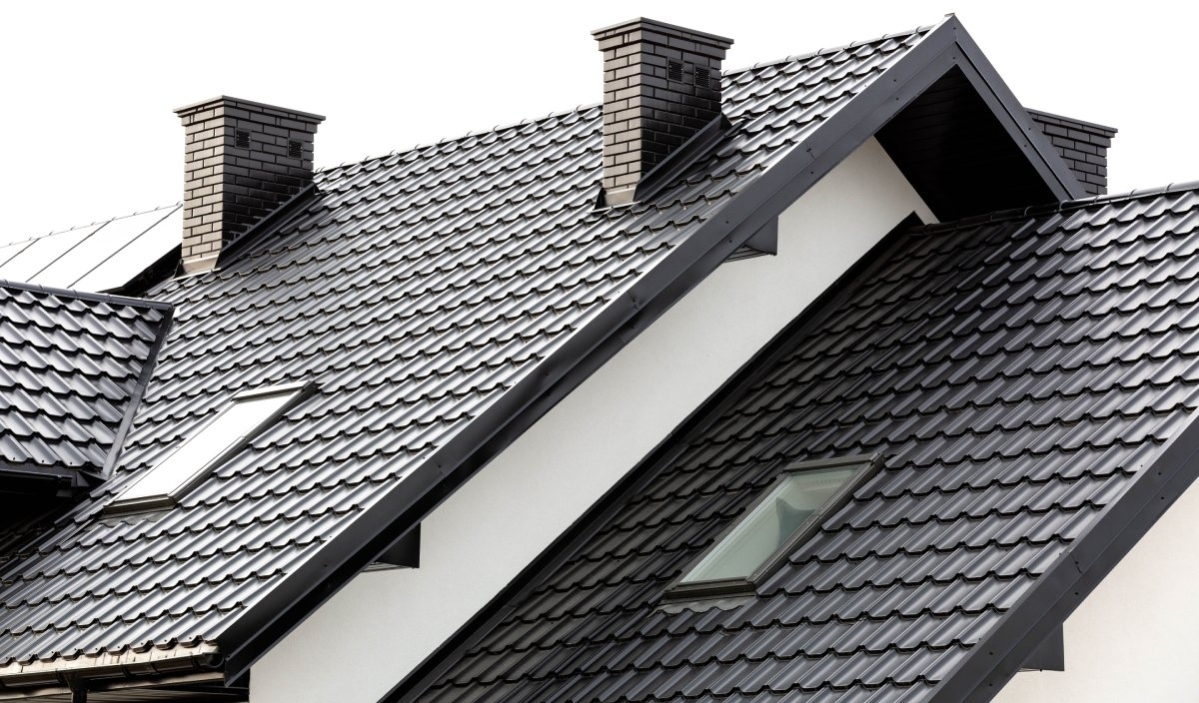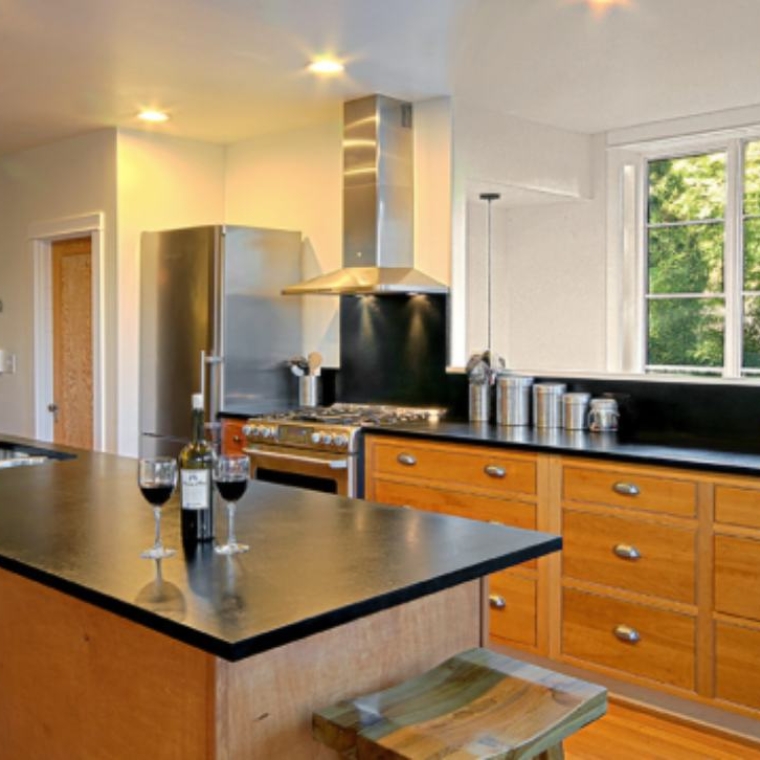Roofing guide
All About Roofing: Basics of Roof Systems [2024]
The roof, a key part of any building, can boost a home's resale value by as much as $12,000. Understanding roofing basics is crucial for its upkeep.
This guide covers all about roofing essentials: types, materials, installation, maintenance, safety, and costs. You'll gain a comprehensive understanding, enabling informed decisions on roofing needs.
In this guide:
- What is Roofing?
- Types of Roofing
- Roofing Materials List
- Roofing Costs Breakdown
- Installation Roofing Step by Step
- FAQs
Ready to explore roofing?
Contact us for a free, no-obligation quote from a local contractor.
Check the Cost of Roof Installation in Your Area
Check the Cost of Roof Installation in Your Area
Get QuotesWhat is Roofing?
Roofing involves the installation, repair, and maintenance of a roof, the top cover of a building designed to protect against the elements, and crucial for temperature regulation and energy efficiency.
- Safety and Comfort: A well-maintained roof ensures the safety and comfort of occupants.
- Damage Prevention: A damaged or leaky roof can lead to structural damage, mold, and expensive repairs.
- Aesthetic and Value: A well-installed roof enhances curb appeal, increases resale value, and improves aesthetics.
Roofing professionals are invaluable for:
|
Service |
Description |
|---|---|
|
Installation |
Choosing and installing the right roof to ensure durability. |
|
Repairs |
Fixing damages to prevent further issues. |
|
Maintenance |
Extending roof life through regular inspections and upkeep. |
|
Replacement |
Assisting in selecting and installing a new roof for long-term protection. |
By understanding all about roofing basics and enlisting professional help, you can maintain your roof's integrity and enhance your property's value and appearance.
Make sure to choose also the proper roofing type for your needs.
Types of Roofs
Choosing the proper roofing type is crucial for both aesthetics and functionality. This choice depends on location, budget, and personal style.
Below is a breakdown of common roofing types, each with its unique features and applications.
High Efficiency Roofs
- Hip Roof: Known for durability, stability, and excellent performance in windy or snowy areas.
- Slate and Tile: Offers exceptional longevity (up to 100 years), excellent insulation, and is highly durable.
Moderate Efficiency Roofs
- Pitched Roof: Popular for residential homes due to better insulation and lower maintenance.
- Gable Roof: Offers good ventilation and is customizable with features like dormer windows.
- Composition Roof: Versatile, with resistance to water and UV rays, suitable for a wide range of applications.
Low Efficiency Roofs
- Flat Roof: Cost-effective for large buildings, but requires more maintenance due to leak risks.
- Shed Roof: Simple and cost-effective, ideal for smaller structures like sheds or garages.
The choice of roof impacts not only the appearance but also the maintenance, durability, and cost-efficiency of your building. It's important to weigh the pros and cons of each roof type against your specific needs and preferences.
If you're uncertain about the proper roofing type for your building, consulting with roofing professionals can provide clarity and direction.
They can offer insights tailored to your building's requirements – including a tailored roofing materials list - , ensuring you make an informed decision that enhances both the functionality and curb appeal of your property.
Roofing Materials List
Choosing the right roofing material among many roofing materials lists is pivotal for the longevity, efficiency, and aesthetic of your roof. This decision hinges on various factors like budget, climate, and personal taste.
Below is an overview of common roofing materials, highlighting their benefits and drawbacks.
|
Material |
Pros |
Cons |
|---|---|---|
|
Asphalt Shingles |
Affordable, versatile |
Shorter lifespan, weather-sensitive |
|
Metal |
Durable, energy-efficient |
Higher cost, professional install |
|
Wood Shingles/Shakes |
Natural look, insulation |
Maintenance, fire risk |
|
Slate and Tile |
Long-lasting, aesthetic |
Heavy, expensive |
|
Rubber Membrane (EPDM) |
Lightweight, water-resistant |
Weather limitations, professional install |
The material you choose affects your building's protection, energy costs, and appearance. It's crucial to weigh each material's advantages against your specific requirements and preferences.
If uncertain about the best material for your roof, consulting with a roofing expert can guide you through roofing materials lists towards an informed decision, ensuring your roof meets your expectations in performance and style and respect your roofing cost budget.
Roofing Costs: Full Breakdown
- Material Costs: Vary with roof type and material choice.
- Installation Costs: Influenced by roof size, complexity, and local labor rates.
- U.S. Average: $7,211
- Range: $4,707 to $10,460
- Roof Type: Costs differ; for example, slate roofs are pricier than asphalt shingle roofs.
- Materials: High-quality materials are costlier.
- Size and Complexity: Larger, more complex roofs lead to higher costs due to more labor and materials.
- Labor Costs: These vary by location and demand.
Understanding these factors can help in budgeting accurately for the roof cost, considering the type and quality of materials, roof size and complexity of the roofing step-by-step process, and local labor costs.
Installation: Roofing Step By Step
Installing a new roof is a crucial investment that demands meticulous planning and skilled execution.
Opting for a DIY approach might seem appealing to some homeowners, yet the complexity and importance of a properly installed roof necessitate the expertise of a professional roofing contractor.
Research by the National Roofing Contractors Association underscores the critical nature of expert installation, revealing that 90% of roofing issues stem from improper installation practices.
- Expertise: Roofing professionals bring invaluable experience, ensuring efficient and correct installation.
- Guidance: They assist in selecting the right roof and materials, considering your budget, style, and climate.
- Cost Efficiency: Early identification and resolution of potential issues can save future costs and time.
A typical roof installation involves:
- Removing the old roof.
- Inspecting and repairing the roof deck if necessary.
- Installing waterproof underlayment.
- Applying new roofing materials like shingles or tiles.
- Installing flashings around vents and chimneys.
- Cleaning the site post-installation.
The duration varies based on roof size, complexity, and weather, ranging from days to weeks.
The longevity and performance of your roof hinge on precise installation. Issues from a poorly installed roof can range from leaks to structural damage.
A professional ensures your roof is installed correctly, adhering to ventilation, insulation, and building code requirements.
Engaging a professional roofing contractor is pivotal for your roof's durability and safety. By adhering to the proper installation process and choosing a reputable roofing service, you secure a well-installed roof that stands the test of time.
See how much a new roof saves you!
Reveal the true cost of delaying your roof replacement. Get a FREE quote & see how much you could save!
Check the Cost of Roof Installation in Your Area
Get QuotesFAQs: All About Roofing Essentials
How do you roof step by step?
- Step 1: Remove the old roofing material.
- Step 2: Inspect and repair the roof deck.
- Step 3: Install waterproof underlayment.
- Step 4: Apply new roofing materials, such as shingles or tiles.
- Step 5: Install flashing around vents and chimneys.
- Step 6: Clean the job site after installation.
What are the basics of roof construction?
Roof construction involves a series of steps starting from designing, selecting the right materials, and preparing the roof deck, to installing underlayment, roofing materials, and finishing with flashings and ventilation systems.
The process ensures the roof is waterproof, durable, and compliant with local building codes.
What are the top 5 roofing materials?
- Asphalt Shingles: Popular for their affordability and variety.
- Metal Roofing: Known for durability and energy efficiency.
- Wood Shingles and Shakes: Offer natural beauty and insulation.
- Slate and Tile: Provide exceptional longevity and aesthetic appeal.
- Rubber Membrane (EPDM): Ideal for flat roofs, offering durability and water resistance.
What are the steps of roofing?
The roofing process includes:
- Removing old roofing.
- Inspecting the deck.
- Installing underlayment.
- Applying roofing material.
- Installing flashings.
- Final clean-up and inspection.
What are the three types of roofing?
- Flat Roofs: Minimal slope, suitable for commercial buildings and modern homes.
- Sloped Roofs: Include gable, hip, and mansard, offering efficient water runoff and aesthetic variety.
- Specialty Roofs: Such as green roofs or solar tile roofs, focusing on energy efficiency and sustainability.
What is the basic structure of a roof?
The basic structure of a roof includes:
- Roof Deck: The foundational layer where roofing materials are attached.
- Underlayment: Provides a waterproof barrier.
- Roof Covering: The outermost layer, such as shingles, tiles, or metal.
- Flashing: Seals and protects the joints and valleys against leaks.
- Ventilation: Ensures airflow to manage temperature and moisture.
Related resources
Window Repair: Complete Guide [2024]
Gutter Guards | Installation, costs, and types
Low Maintenance Siding Options
Easy 1-Day Bathroom Remodel [With Costs]
Last update: 25 Dec 2024










